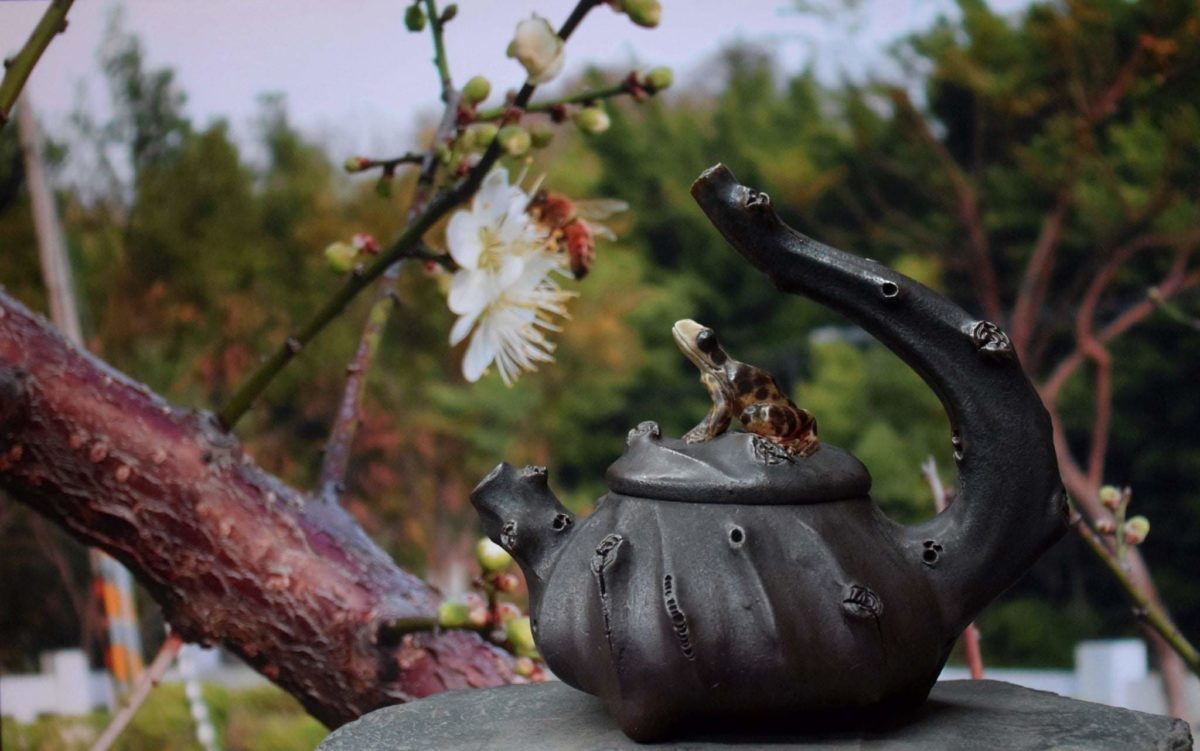
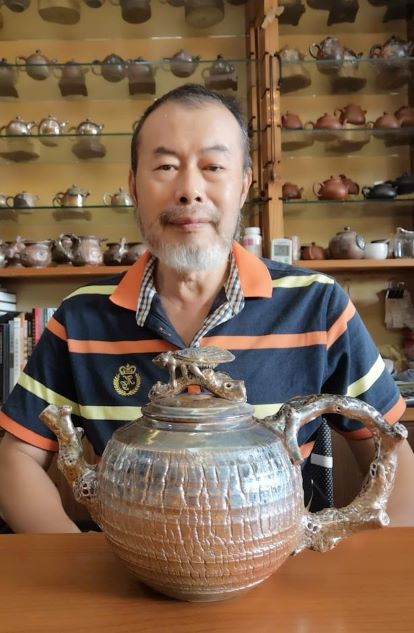
The ceramic artist Luo Shi travels twice a month to the mountains of his ancestors. There, in the peace and quiet, he wood-fires his pieces, closely watching the kiln all night.
“The fire is as much the artist as I am,” he told Wu De in a feature published by the Global Tea Hut.
Luo is one of Taiwan’s most respected ceramic artists. He was born in Nantou in 1959, the son of a Hakka woman from Miaoli. His brother has farmed tea in Nantou since the 1980s when he replaced the family fruit orchards. Luo at first owned a restaurant where he sold the family’s tea and eventually a tea shop that specialized in Yixing teaware. In 1992 he met Tang Runqing, one of the few Yixing masters in Taiwan using the clay slab technique. Luo says that he is most fortunate to have studied the art of shaping Yixing from such a talented practitioner.
Luo uses iron-rich Miaoli clay and traditional methods to bring his vision of nature to life. His work, such as the wonderful teapots and vases like those pictured in this article sell for hundreds of dollars each in his homeland and have earned him celebrity status in Taiwan’s fine arts and tea-drinking circles.
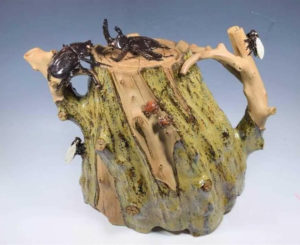
Besides being a gifted ceramicist, Luo also has a reputation for being a kind, generous person who shares his deep craft knowledge with others.
His story is one of fine Taiwanese craftsmanship. But as is so often the case, to better understand tea culture in Taiwan, let’s first cast our eye to mainland China.
Mention teaware to a fan of Chinese tea and they’ll almost certainly know the term Yixing. Yixing clay, traditionally mined near the town of Yixing in the mainland Chinese province of Jiangsu, is legendary. But by the time Luo began exploring ceramics, in the late 1980s, good Yixing clay was becoming hard to find. Nonetheless, he was able to source some decent Yixing teapots and started selling them alongside tea from his brother’s farm.
Miaoli is a leading ceramics center with its own local clay and dozens of separate kilns in operation. Around 2007, Luo began experimenting with Miaoli clay, which is rich in iron. That’s good news for tea drinkers since iron-rich clay is said to make tea sweeter. He also adopted wheel-throwing as his preferred technique and started using a wood-fired kiln.
Wood-firing at around 1,230 degrees allows the ash to form its own glaze, giving his creations a beautiful texture. Luo sometimes uses discarded pieces of wood to create stunning side-handle pots (See Japanese Style Kyusu Pottery).
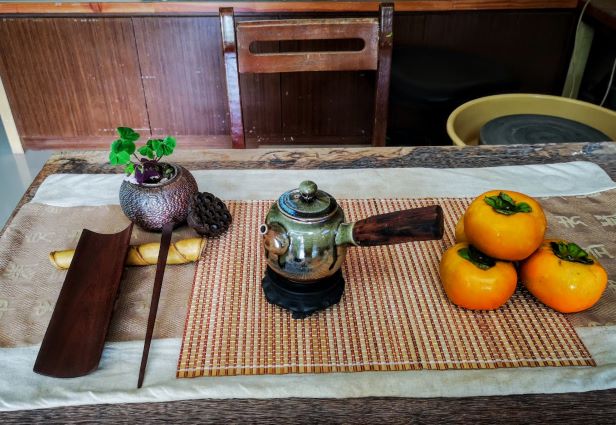
Q|A with Luo Shi
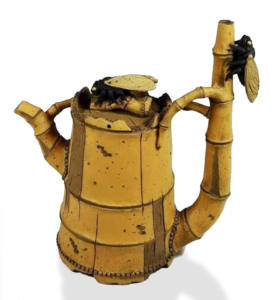 Damien Kinney: How did you become a ceramist?
Damien Kinney: How did you become a ceramist?
Luo: The field of ceramics is extremely wide-ranging. Before you start studying it, it’s important to understand just what ceramics is all about. For example, there’s a myriad of ways to give shape to your material. A whole range of materials can be used to make pots and other items. You need to choose your materials based on what you want to create.
Damien: Who has taught you the most about the art and science of ceramics?
Luo: Without a doubt, my teacher Tang Runqing. He has been prolific, teaching ceramic arts courses all over Taiwan. A lot of ceramics studios in Taiwan are heavily involved in teaching. Anyone who wants to study here can choose a studio and teacher based on what area of ceramics they want to focus on. We also have craft research and development centers engaged in teacher training.
Damien: Will you describe your creative process? How do you develop your ideas and bring them to life?
Luo: First I mix the clay, then I start working with it. Then, it all depends on what kind of piece I want to create. In terms of technique, I can choose wheel-throwing, hand-building, or slab construction.
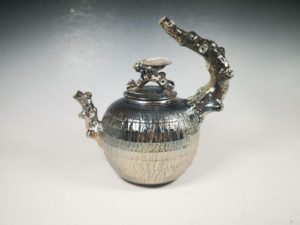
Damien: What kind of objects do you most enjoy creating?
Luo: I most enjoy creating teawares and objects used for flower arrangement, such as vases.
Damien: Do you believe the Taiwanese people, in general, have a strong appreciation of ceramics?
Luo: Ceramics are absolutely everywhere in Taiwan, including ceramics designed for food, commercial ceramics, decorative ceramics, and industrial ceramics. Therefore, an appreciation of ceramics depends on a person’s scope of understanding as to what ceramics are for.
Damien: What advice do you give those who are interested in trying ceramics for themselves?
Luo: I would say you first need to know what kind of item you would like to make. Then you need to choose your materials and technique, then seek out a ceramics teacher to guide you. You’ll find that every ceramics teacher has a different focus and area of expertise.
Luo Shi’s Facebook page
Tea Market
Get More Value from Your Tea: BRU Maker One
+41794574278
Jacque's Organics
(647) 804-7263
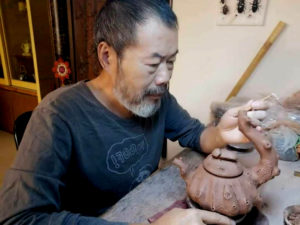
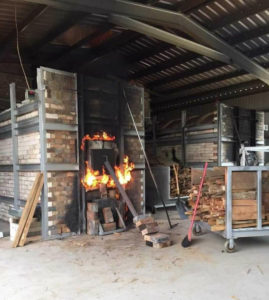
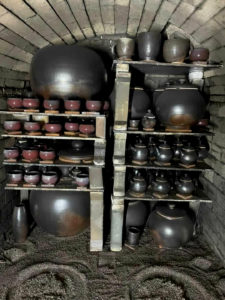
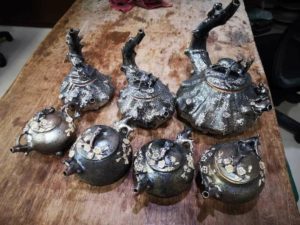
Absolutely insightful,
Thank you very much for your work.
Noora
Thank you Noora. Glad to hear it.